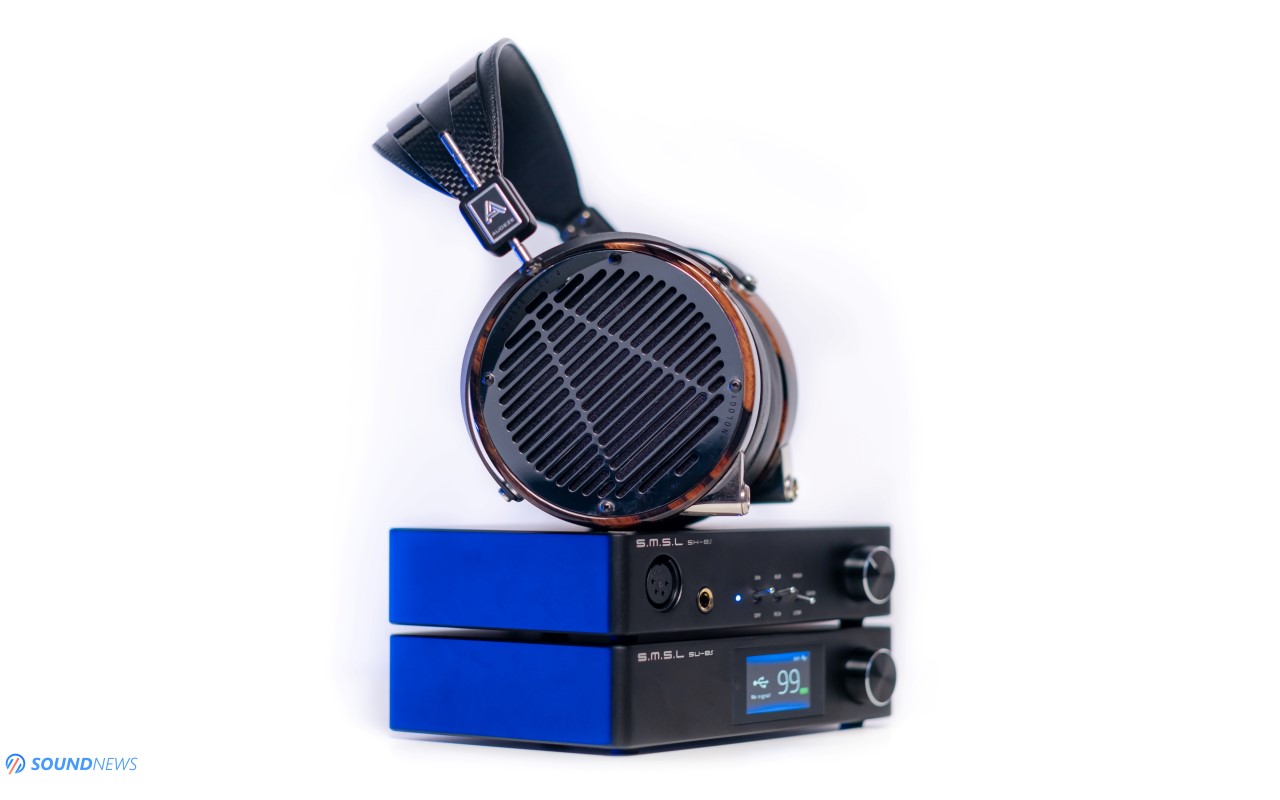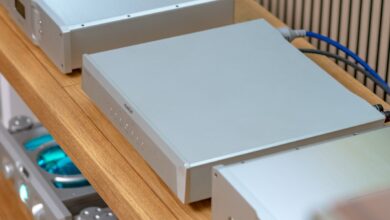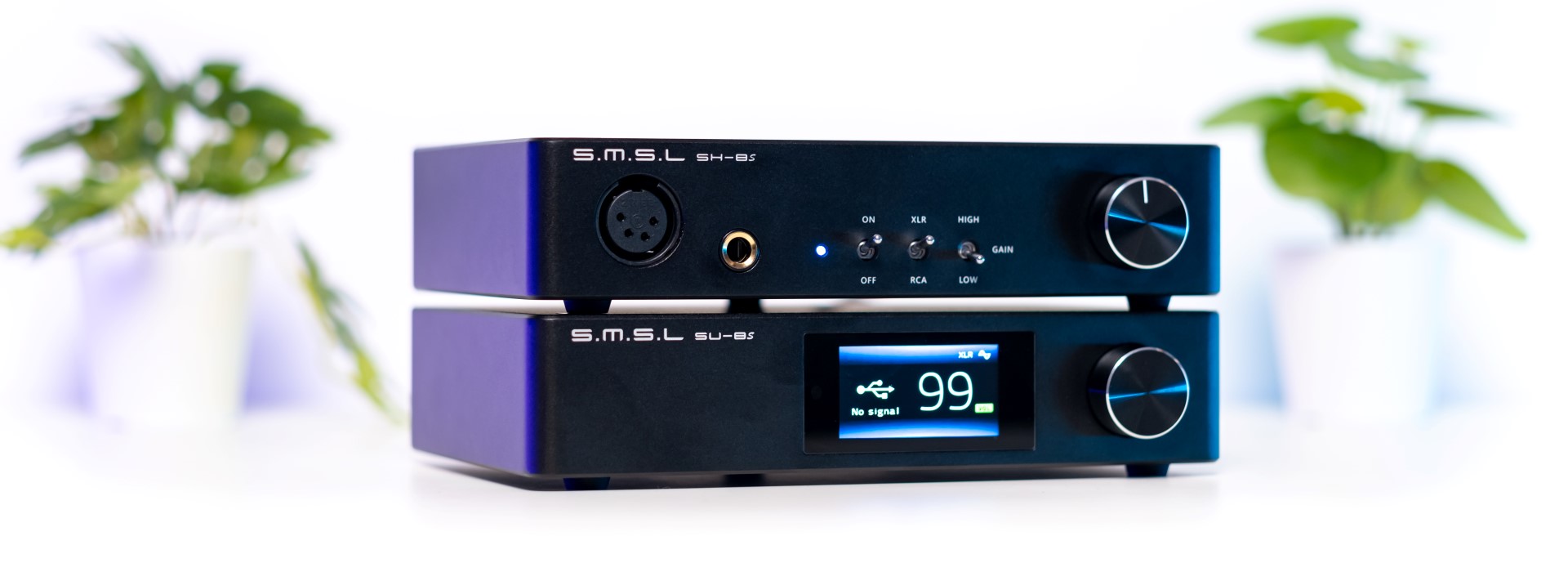
My Video Review:
You got to give some credit to Hi-Fi brands coming out of China that forever changed the definition of entry and mid-level Hi-Fi. The biggest competition they have right now is…themselves. Companies like SMSL, Topping and Gustard are no longer competing against Western companies, as they are racing against each other and that’s…a good thing. We get lower priced gear at the same levels of performance; it is a win-win situation. SMSL Audio had several attempts at high-end audio with their VMV series, but in all fairness, SMSL is best known for their affordable stuff that anybody could get and we already covered plenty of that. Their M200 DAC and SP200 headphone amp were particularly interesting, but their SU-9 and SH-9 were pretty much unbeatable at their respective price points.
Today I will be testing something that is more affordable, but still feature packed to its teeth. The newest SU-8S is replacing the good old SU-8 DAC, it uses the latest ESS Technologies DAC chip, it offers full MQA support, it decodes natively PCM 32-bit and DSD512 content and thanks to a new Bluetooth chipset, it supports some of the nicest codecs. It houses a colorful LCD screen in the middle, an advanced UI will show all the important stuff and it goes for as little as $359.
Its complementary headphone amplifier is called SH-8S. SMSL ditched those ultra-linear THX-AAA modules in favor of their own Precise Linear Feedback Circuit (PLFC) that could pump 6 Watts of power on both headphone jacks. SH-8S isn’t using a true balanced topology, but who cares when you have so much power under that hood. Noise floor is nowhere to be spotted, its distortion levels are staying extremely low and I’m curious to know how it will handle gentle and sensitive IEMs and also flagship planar-magnetics. SH-8S follows the standard SMSL look and it goes for as little as $229. As usual, I will be approaching this combo as a critic, but also as a music lover, commenting on everything I find useful to share with you.

Unboxing Experience
It is already a norm seeing them double boxed, filled with absurd amounts of foam for a better protection during shipping, everybody does that nowadays. SMSL used the same packaging going with a “if it ain’t broke, don’t fix it” slogan. Both units are small and lightweight enough, in line their SU-9 and SH-9 siblings. Besides the unit themselves, you’ll find power cords, user manuals, warranty cards and some extra silicon feet. The D/A converter is also coming with a USB Type-B cable and with a good old SMSL remote control, which is essential in a loudspeaker setup.
I strongly recommend checking out their user manuals first that will offer you more information than their dedicated web-pages.

Design & Build Quality
Finally, SMSL ditched the weird looking M200 and SP200 case in favor of a standard brick-like look. I didn’t like the tiny displays on their predecessors (SU-8 and SH-8) and a much bigger 1.9” LCD screen on the SU-8S looks like a huge upgrade already. I don’t mind dropping the LCD screen on the SH-8S, since a simple and straightforward headphone amplifier doesn’t need any of that.
I have to mention that both units are among the very few SMSL devices which aren’t using weird and ugly looking cases. They don’t have odd shapes, elongated bodies, tiny screens or questionable volume knobs and in my opinion, SMSL are already staying on the right path. They look like miniature matte-black metal bricks, milled on a CNC machine with just two panels attached on top and underneath them. Their bodies have a thickness of about ~3.5 mm, so wireless interference shouldn’t be a problem at all. The front panel houses a glass sheet on the D/A converter that is on the same level with the case, it’s a seamless and beautiful design. Their volume knobs are slightly better compared to the M200/SP200 combo, as there is less wobbling and a higher resistance. There are 3 rubber feet underneath them and if you have some heavier power cords as I do, they might lean on one side. Luckily, SMSL added additional feet in the package and you can easily stick them for a nicer grip on the table. Overall, I find their build quality nice and I have close to zero complaints. As usual, SMSL moved most of the screws on their backs for a clean minimalist look. There’s an unknown 7-pin connector under the SU-8S, which I presume SMSL is using for diagnostics and for servicing their units.
As far as I know, SMSL is offering them only in matte-black and at less than a kilo, they are lightweight and small enough to be used in tight spaces and in small office desks. SU-8S is dissipating little to no heat at all, so you can easily put the SH-8S on top of it for a cute looking Hi-Fi combo.

Controls & I/O
SH-8S reminds a lot about old-school amplifiers thanks to its heavy-duty mechanical switches on the front panel. With them you will be turning it On and Off, select its input and gain level. There’s a 4-pin XLR and a regular 6.35mm headphone output on the left and a volume wheel to its right. It has only a pair of RCA and XLR inputs on its back, it isn’t equipped with analog outputs so you can’t use it as a dedicated preamp in your loudspeaker setup.
On the other hand, the SU-8S looks more futuristic with just a 1.9” LCD screen in the middle and with a volume knob to its right that can also work as a menu navigator or as an On/Off button. On its back you’ll find an Optical, Coaxial and USB input, a Bluetooth antenna socket and two analog outputs coming in RCA and XLR flavors. It can work as a DAC or as a DAC and Preamp combo, as its voltage output can be variable or fixed.
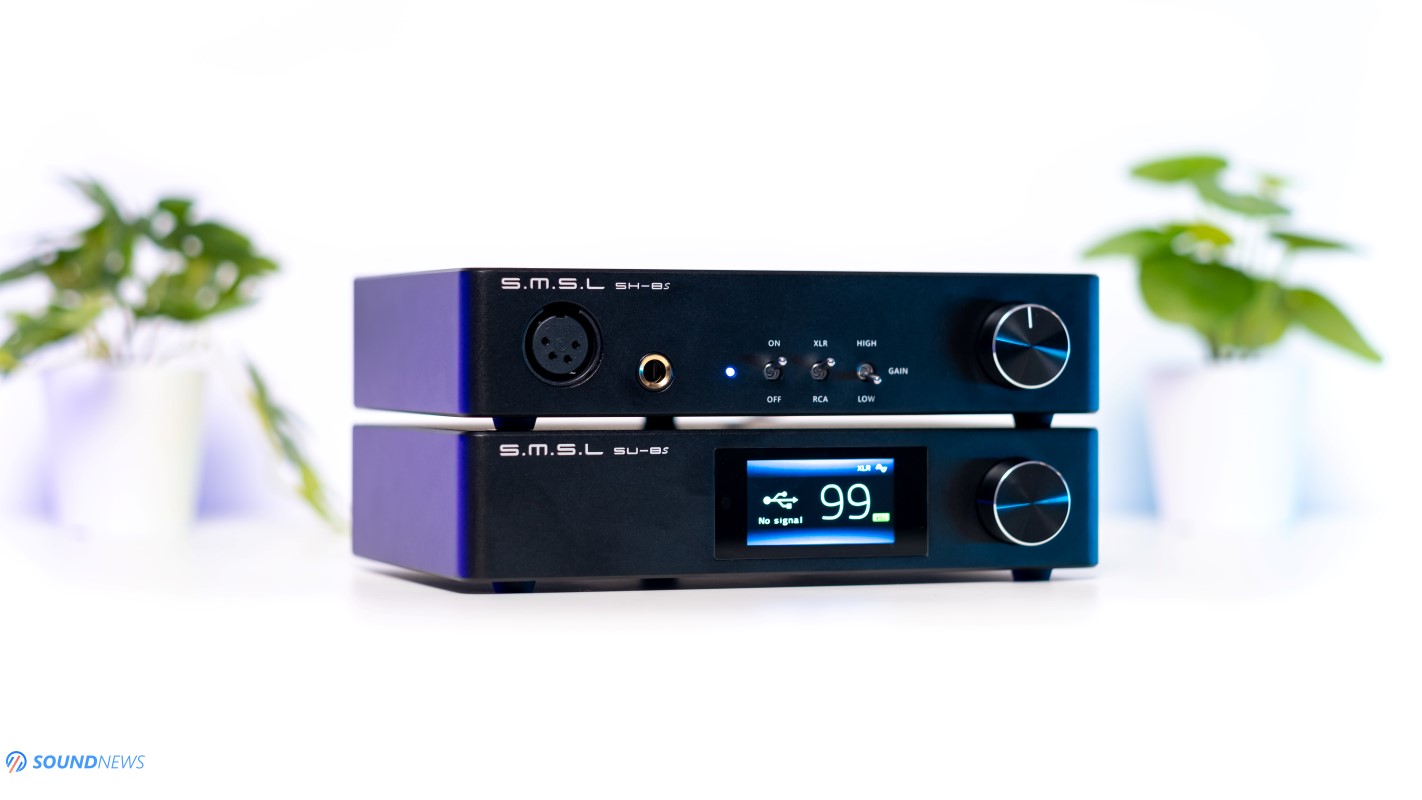
Menu Options on SU-8S
All features can be controlled via its remote control or via its volume knob that doubles as a joystick. In the stand-by mode a single press on the knob will power it on and another press will enter its menu where you can select:
- Inputs – USB Audio, Optical, Coaxial and Bluetooth – very straightforward
- Outputs – All Normal, XLR Normal, RCA Normal, All Inverted, XLR Inverted or RCA Inverted
- PCM Filter – you can select your desired digital filter that are built-in directly in the ESS Sabre DAC chip, there are 3 filters to play with as Fast Linear, Slow Minimum and Minimum Phase, but the sound difference between them is slight at best or none at worst.
- SPDIF Mode – Normal, Processor – I sincerely don’t know what it is, since User Manual Ver 1.0 is incomplete or plain wrong in certain areas.
- Sound Color – Standard, Rich 1,2,3, Tube 1,2,3 and Crystal 1,2,3. I like the standard one the most, but if you would like to alter its voicing, there are plenty of options to choose from.
- PRE Mode – Volume Fixed or Variable, if you will be using it as a DAC only device, leave it at Fixed.
- FN Key For – Switch XLR/RCA, All Outputs or Bluetooth – you are selecting the function of the FN button on its remote control
- DPLL Bandwidth – 15 positions, 5 is the default one. This setting is changing its jitter reduction algorithm, leave it in the default position.
- Dimmer – OFF or 5 to 60 seconds – self explanatory
- Brightness – 6 positions, lowest one is almost dimming it completely
- Reset – back to factory settings
This is basically it, a simple and straightforward graphical user interface, which looks more advanced to the one I’ve seen on their SU-9.
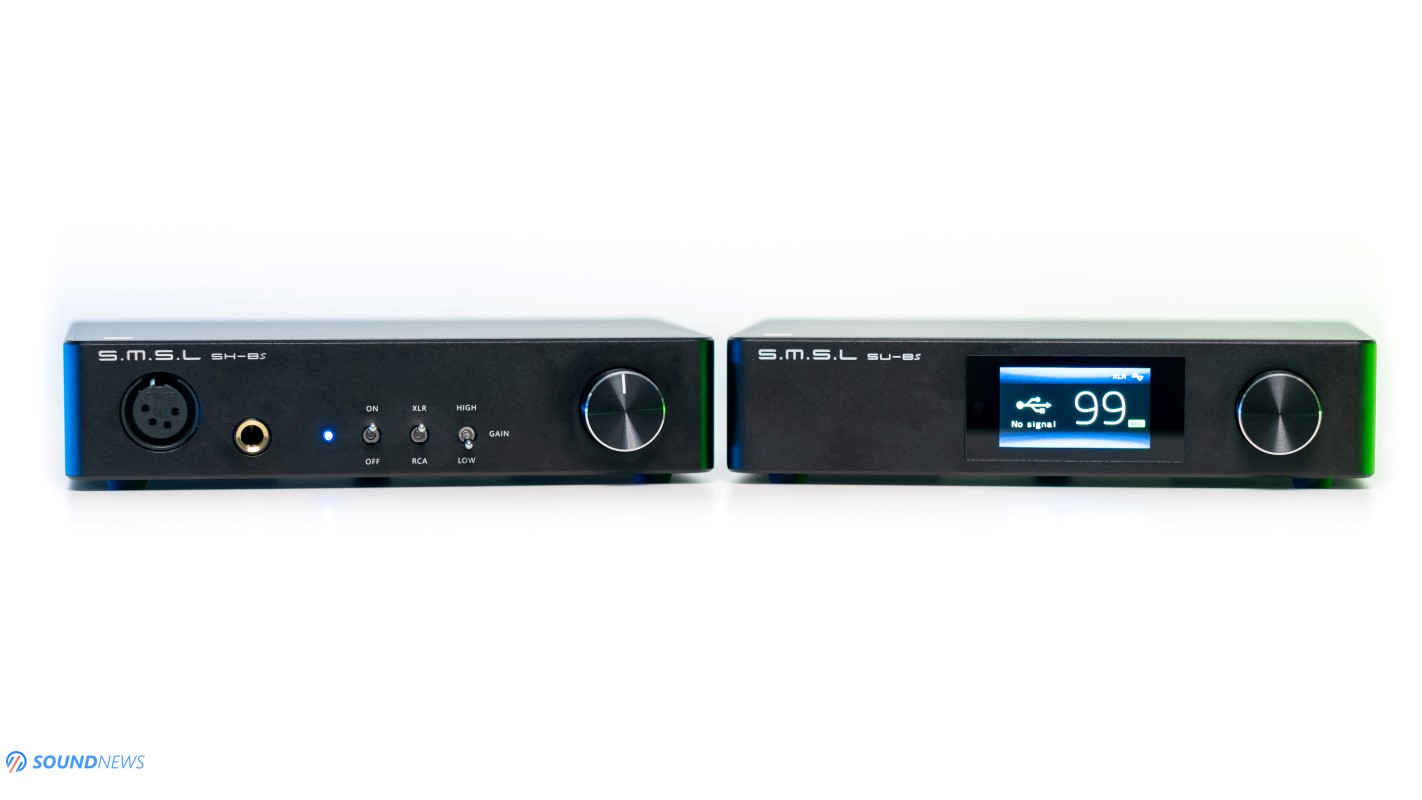
Tech Inside them
I’ll start with the SU-8S, as digital audio is considerably more complicated and interesting to me. SMSL went the latest ES9068AS 4-channel DAC chip of ESS Technologies that incorporates a full blown MQA decoder in the same silicon. It means that additional electronics are no longer needed to fully unfold and decode MQA content. This way the signal path will remain as short as possible and it should lock on those files instantly. So far, this is the cheapest MQA capable DAC from the house of SMSL Audio.
ES9068 is a current output DAC chip, meaning that a current to voltage conversion (I/V) stage needs to be built around it. Thankfully, SMSL went with four warm and natural sounding OPA1612 op-amps, instead of LME op-amps that were sitting in their older devices. OPA’s are better suited for ESS chipsets and SMSL is already going into the right direction with them. I’m glad that SMSL used all 4 channels of this particular DAC chip, meaning that SU-8S is indeed a true balanced DAC design. There are three tiny op-amps used at the LPF (output) stage, but I can’t see the lettering and my macro lens aren’t helping much.
I’ve spotted four crystal clocks – that is a higher number than usual, most probably three are used for PCM material and one for DSD.
SMSL went with the nicest XMOS chipset that you can spot in some of the best delta-sigma DACs of today. XU-216 (2000 Mips) is in place and it’s the recommended chipset for MQA, Hi-Res PCM and DSD playback.
SMSL uses a decent Bluetooth receiver that supports codecs as SBC, AAC, AptX and AptX-HD. Sadly, the best codecs as LDAC, HWA and UAT aren’t supported by the little fellow. On the plus side, Bluetooth version 5.0 is in place and thanks to an external antenna, the signal should be strong and reliable enough even with few concrete walls in between.
SMSL uses an encapsulated 12 Watt switching mode power supply (SMPS). I’ve seen the same power supply in their SP200, M200, SU-9 and SH-9 where it performed great, being dead silent and noiseless even with the most sensitive loads.
As for SH-8S headphone amplifier, finally SMSL moved away from those THX Achromatic Audio Amplifier modules that were powering their extremely popular SP200, SH-9 and SP400 headphone amplifiers. Finally, not as a bad thing, as I personally enjoyed those amps with many of my headphones, but finally as they can unleash their imagination and prove that THX-AAA is not the final frontier. SMSL developed their own modules that were called Precise Linear Feedback Circuit (PLFC for short) that feels like a direct response to the Nested Feedback Composite Amplifier (NFCA for short) modules of Topping. Interesting seeing a challenger entering the arena, I’m quite excited already. SMSL isn’t specifying what op-amps were being used, but I’m spotting two OPA1612 as voltage amplifiers and two OPA564 as current amplifiers that can output up to 1500mA each. I’m spotting several discrete components, the same 12 Watt switching mode power supply is also present, several voltage regulators and a slightly higher capacitance to the SU-8S can also be seen.
SH-8S outputs some serious power, more exactly 6 Watts in 16 Ohms and half of that in 32 Ohms. With numbers like these, this little big amp should drive even the most demanding headphones as high-impedance dynamics or current-driven planars without sweating. Of course, I will be testing both instances, so stay tuned for that. A big surprise was spotting a unity gain of 0 dB on its low-gain setting that should work exemplary with high-sensitivity IEMs. Please make sure you lower your volume before jumping to its high gain setting as there is a 17.5 dB increase!
That is pretty much it, I’m longing for music for two days now (a short time frame that I used for burn-in purposes), so let’s hit some eardrums!
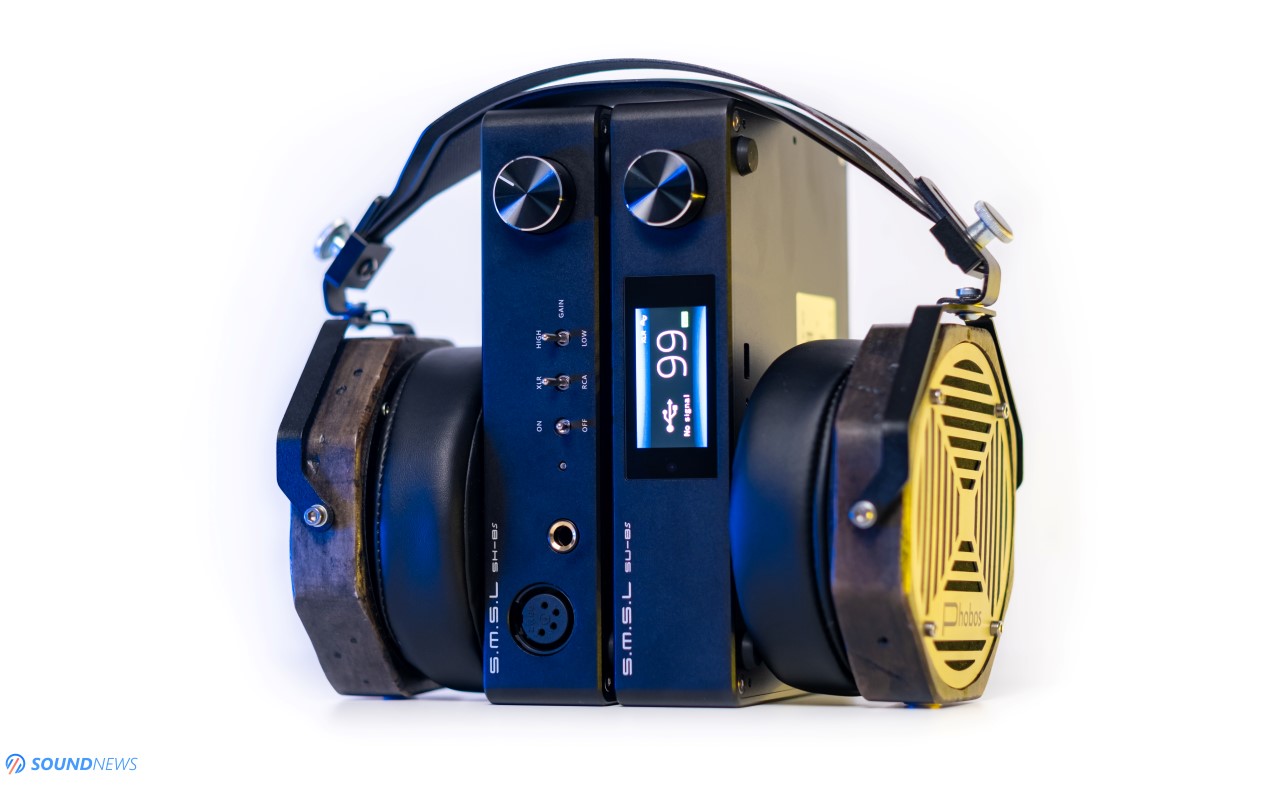
Sound Performance
I. Preliminary Sound Impressions
Before starting this review, I’ll remind you that both units can be considered as entry-level devices in SMSL’s portfolio and they should be treated as such. After doing a long listening session, this combo reminded about the sound of their SU-9 and SH-9 combo that are going into the same direction sound wise, choosing linearity, a colorless music reproduction, focusing on technicalities and less so on the emotional side of music listening. After two days of continuous burn-in, it seems that this combo sounds mostly the same as it did on the first day and I’m ready to offer my final impressions.
First of all, I find them clean and transparent sounding to their core, they aren’t noisy even at higher volumes, distortion is out of the window and you cannot remain unimpressed in these two departments. Another stand-out was their lightning-fast speed and decay. They aren’t as @ss-kicking as a native class-A amplifier would pound and kick my eardrums, but they surely have the Speedy Gonzales spirit in them. Transient response is fantastic, except for the final kick that isn’t that raw and visceral. SMSL seems to be going towards the measurement crowd, caring more for numbers and less so for the actual music listening. While there are a lot of good things to say about this combo, they weren’t making me move to the rhythm of the music, there is little to no warmth or smoothness. While there is plenty of treble information up top, there is a lack of refinement in there, making that treble appear somewhat clinical and fatiguing in longer listening sessions. Out of my headphone collection, Hifiman HE1000SE didn’t work that well with this combo, midrange wasn’t deep reaching and voices weren’t grabbing my soul, but the treble itch was the biggest issue what I couldn’t overcome with these headphones. Erzetich Phobos 2021 Edition were also quite aggressive and I couldn’t make them sing on the little combo. However, there were several outstanding pairings that I truly enjoyed my time with. All Kennerton and Audeze headphones played extremely well, that linear midrange and a higher treble output worked as a cure, almost as a hardware parametric equalizer that counterbalanced all the issues of said headphones. Audeze LCD-4 were particularly interesting, as the SMSL combo elevated their detail retrieval, revealing additional notes in the treble and making them faster sounding.
High-gain offered plenty of power for headphones of such caliber and I barely touched the 12 O’clock position with the LCD-4. Kennerton Wodan and Erzetich Phobos didn’t need more power than what was available on low-gain, leaving a huge headroom on tap for higher dynamic swings and for better recorded albums. The only headphone that demanded more power, refusing to sing beautifully was Hifiman Susvara, as SH-8S couldn’t provide enough current and at around 3 O’clock the sound started breaking up, sending it into clipping and heavy-distortion wonderland.
From these two little boxes, the D/A converter is slightly more to my liking, as it sounds linear with just a pinch of naturalness. SH-8S on the other hand, went for a V-shaped tonality, focusing on the frequency extremes and less so on the midrange department. This combo isn’t sounding warm, seductive, dense, smooth or organic and more like on contrary to that. I know that sound is a very personal thing, so I will leave it to you to decide if this combo could be to your liking.
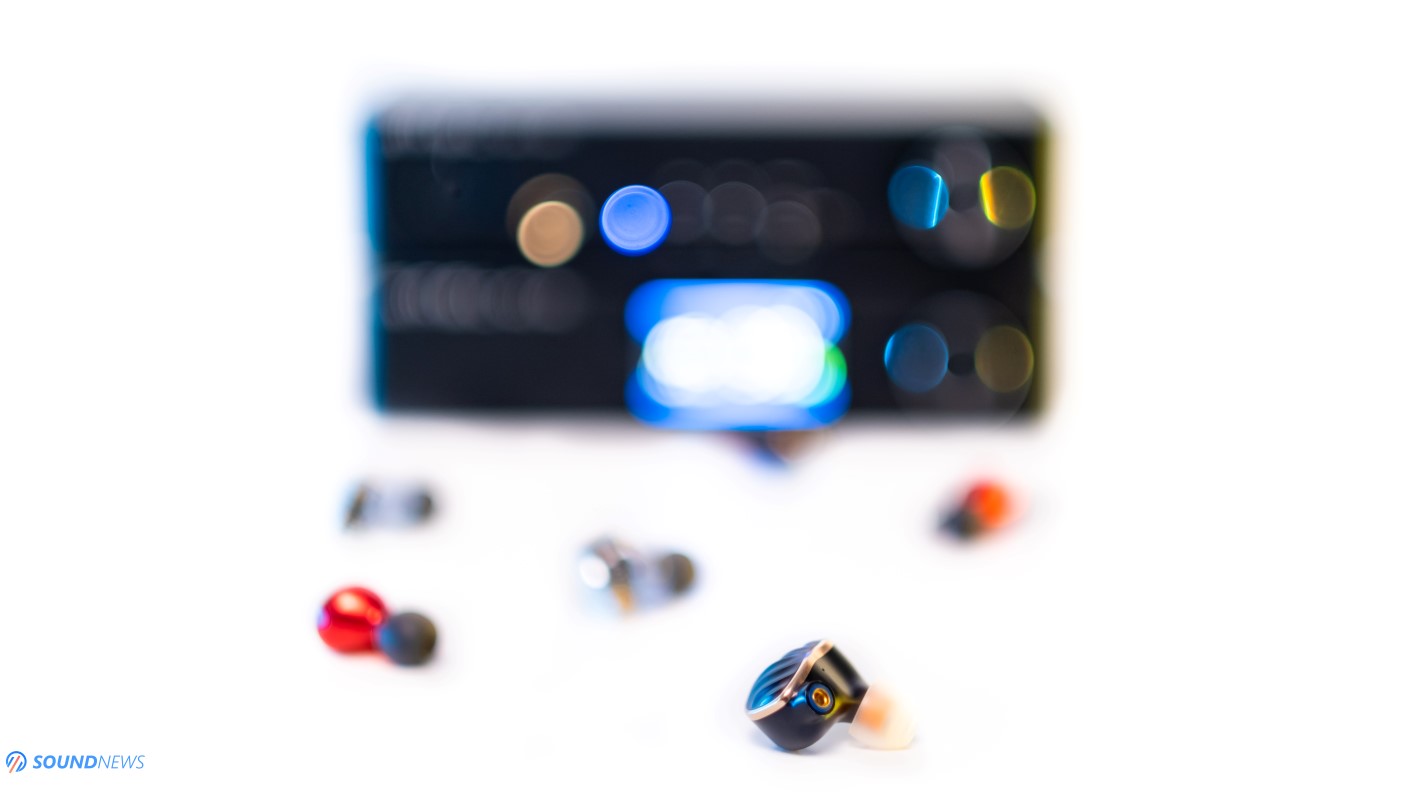
II. Noise Floor
SMSL are mostly using switching mode power supplies in their entry to mid-level devices and it seems that their competitors started using those too. I’m not a huge fan of such implementations, but with proper engineering skills, followed by a nice filtering and regulation stages, everything is possible. I’m reminding you that higher priced SU-9 and SH-9 units are using a very similar configuration, so there is plenty of hope in today’s combo.
On top of everything, SMSL’s newest PLFC was created to kill the noise at the inception, so it would never crawl into your precious headphones. I’m feeling a very strong sense of Deja-Vu, as THX-AAA and NFCA circuits are solving the same problem, but in a different way. A few years ago, there wasn’t a dead silent desktop headphone amplifier on the market, especially with sensitive IEMs, but things changed drastically when Benchmark released their HPA4 amp that I’m still using on a daily basis. SMSL’s ultra-low-noise design dropped the noise floor on the SH-8S to just 1.3 micro-Volts and that’s…a very impressive number, considering the size, but especially the price of this unit.
Nonetheless, I still wanted to hear it to believe it, so I’ve put those FiiO FA9 in their high-sensitivity mode (113 dB per 1mW), I’ve connected them to the standard ¼” output and I’ve started searching for gremlins in my tracks. After pausing my music and cranking out to maximum volume on low gain, there was nothing to be heard, as an absolute silence fully covered my tracks. There are no residual noises at any volume levels, it offered a pitch-black background and a noiseless performance with all my IEMs. Only when I’ve switched to its high-gain mode, past 12 O’clock some noise made an appearance, but that is normal behavior considering the amount of power it outputs at that volume. Of course, nobody can listen to music at that SPL, as it would damage the IEMs and my ear-drums in a split second. At normal listening levels you can easily use the highest sensitivity IEMs even on high gain if you please and you would never hear any disturbing hisses or noises, making it an extremely IEM friendly amplifier. Volume wise, the highest I could go was about 11 O’clock on low-gain and that would equal around 9 O’clock or less on the high-gain. If you want to have a total control of your IEMs and have a longer volume travel, then I recommend using the low gain setting for the best results. Please make sure you lower your volume before jumping to its high gain setting, that increases the SPL by 17.5 dB!
The only negatives I could mention about the SH-8S is that at the lowest volume level you can still hear your music playing in the background and it’s much louder on the high-gain. Not a biggie, you can still silence the SH-8S by pressing the pause button.
Apart from that, the SU-8S DAC doesn’t seem to increase the noise floor at all. With or without a passive power conditioner in the chain, this combo performed outstanding and I’ve never experienced a buzz or hiss in any of my tunes, even at a much higher volume level. In this regard, this combo behaves the same as their bigger brothers SU-9 and SH-9 that we’ve tested some time ago.
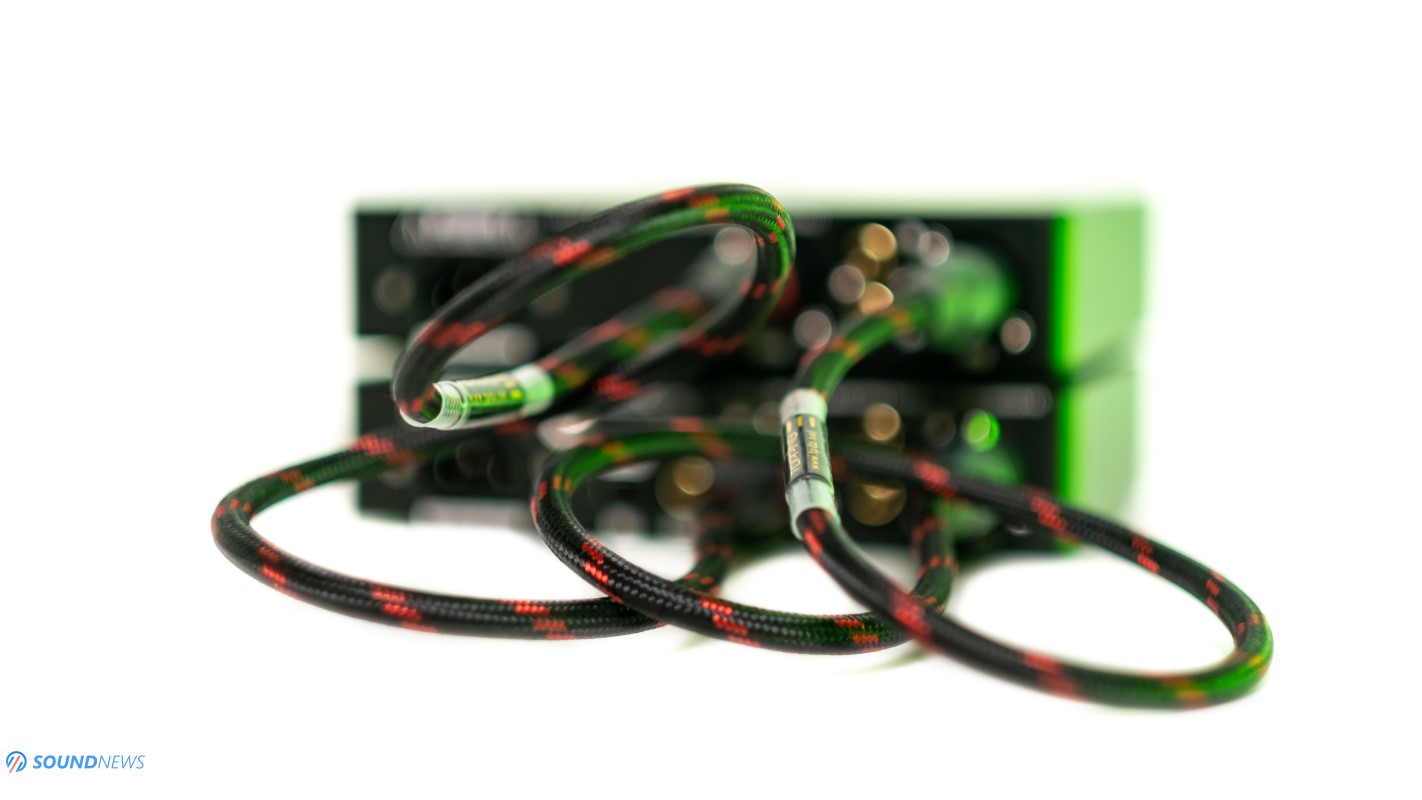
III. Resolution & Transparency
It was clear from the start that the little SMSL combo wants to impress with three things: absolute linearity in the frequency response, a noiseless performance with IEMs and an impressive detail-retrieval even at very low SPL. The last part was so obvious, that I’ve mistaken the SH-8S with their SH-9 and with several Topping units. Undeniably, there is an impressive detail retrieval with both units and if I would split them apart and use some higher-grade electronics, then the amp would shine a little brighter and would impress me a little more. Its most powerful weapon is also its biggest downfall and while you can hear every single nuance and micro-detail without flexing your brain, it could become a bit tiring in the long run. This wombo-combo can sound too serious and too robotic at times, showing strong leading edges, outlines and inner-details, without putting flesh on those skinny bones or goose bumps all over your body. There is definitely a high level of transparency with both units, but there is little to no flow, leading towards a dead-neutral presentation.
Nothing wrong with being neutral and clean sounding, but it’s good to know in advance what you’re getting for your hard-earned money. You can hardly differentiate this amp from their upper-class SH-9, as both are carrying the same acoustic properties, choosing the same colorless tonality, without leaning towards the bright or warm side. You can call the little amp as a wire with gain amplifier, as it moves away from your acoustic chain without leaving a single trace. Both units are quite impressive when it comes to transparency, but the amp is definitely cleaner and could unearth more details from your music.
After splitting them apart, it became obvious that the DAC unit didn’t sound as detailed as their SU-9 and as their pricier VMV D1SE DAC. It was clean, colorless and completely noiseless, but it wasn’t showing the last drop of information from my tunes as other units did. Will the SH-8S amp sound even better with a higher performing DAC? Sure, It will, but in the end, it is all about balancing the good and the bad and I consider that SMSL did a pretty good job in here.
The shimmers I’m feeling on higher priced DACs are still there, the small feet movements were felt too, people were still inhaling and exhaling when big orchestras started playing. When it comes to detail retrieval, SU-8S will still perform on a decent level and will not feel embarrassed at all by higher-end DACs. Sure enough, there are cleaner sounding sources out there, but at this exact price point…I’m not so sure.
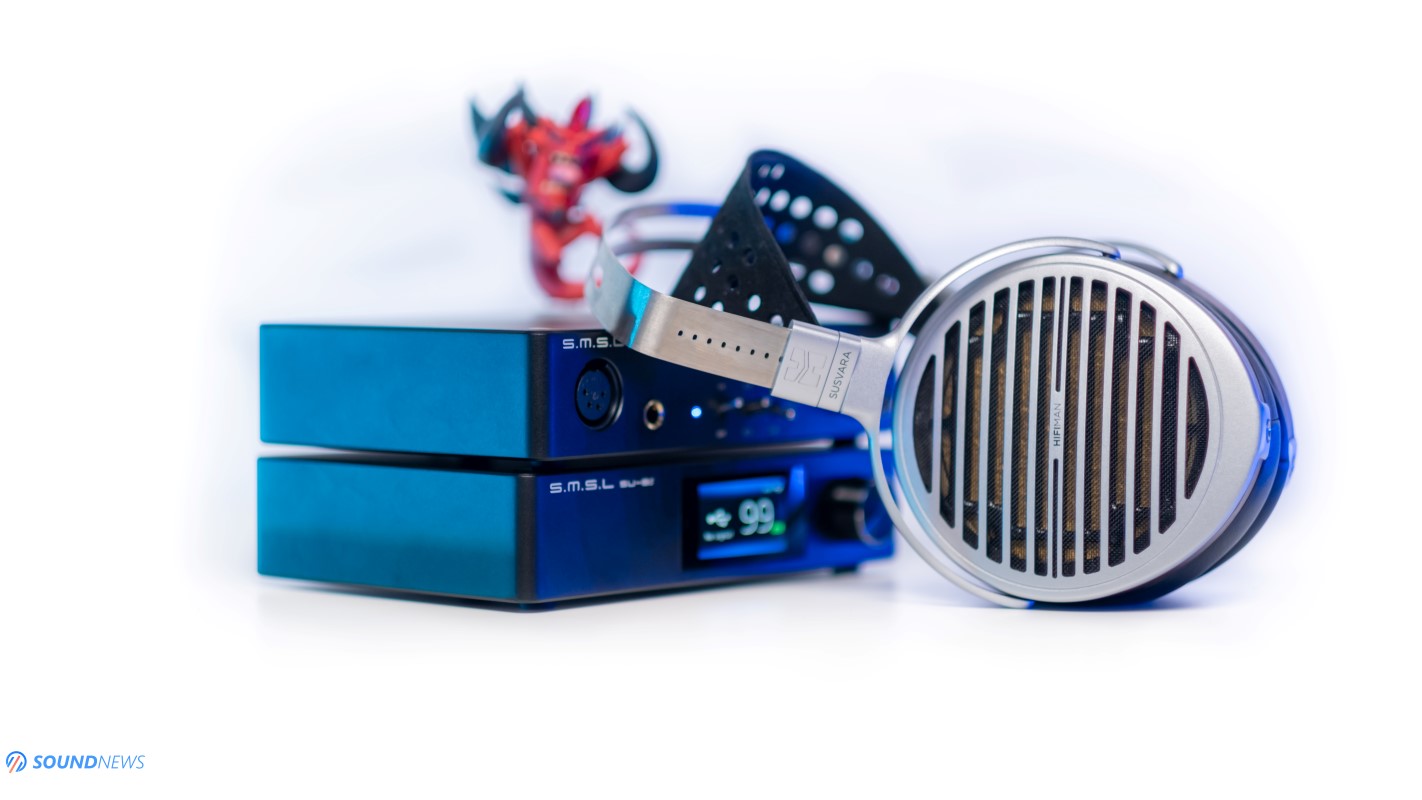
IV. Power Output
SMSL used the same time-tested configuration, as their SP200 and SH-9 are providing a similar output of 6 Watts in 16 Ohms and half of that number in 32 Ohms. As a small detour, its predecessor SH-8 couldn’t deliver not even a single watt of power via the 4-pin balanced output, transforming the newest SH-8S into a must-have upgrade if you’re using hungry headphones on a daily basis. SH-8S offers almost 10 times the power of its predecessor, making it a true bargain and one of the most impressive watt-per-dollar headphone amplifiers I know.
My own Benchmark HPA4 offers the same power output and if you don’t believe in miracles and by that, I mean driving the hardest loads as Hifiman Susvara with tiny amps, then SH-8S could drive pretty much everything out there, except for Hifiman’s best.
From tiny IEMs, to portable over-ears, then to desktop dynamic and planar-magnetic headphones, SH-8S drove them all with flying colors! Yes, including heavy burdens like Audeze LCD-4, Erzetich Phobos 2021 Edition, Kennerton Wodan and Hifiman HE1000SE and there was still plenty of headroom left on tap. Dynamics were good, headphone drivers were tightly controlled, all sounding fast and nimble. Bass notes weren’t all over the place, as there was an order and a strict control over those drivers. As long as you don’t pair it with bright sounding headphones, the SMSL combo will be delivering clean undistorted power to your precious headphones and could potentially place a smile on your face. From my headphone collection, only the Hifiman Susvara refused to sound mean and engaging, lacking bass definition and weight, punching like a school girl when it comes to transient response. Nothing to worry about, that is a perfectly normal behavior as I’m currently driving them with two power amplifiers in bridge mode that are pumping some 380 Watts into them. Ouch!
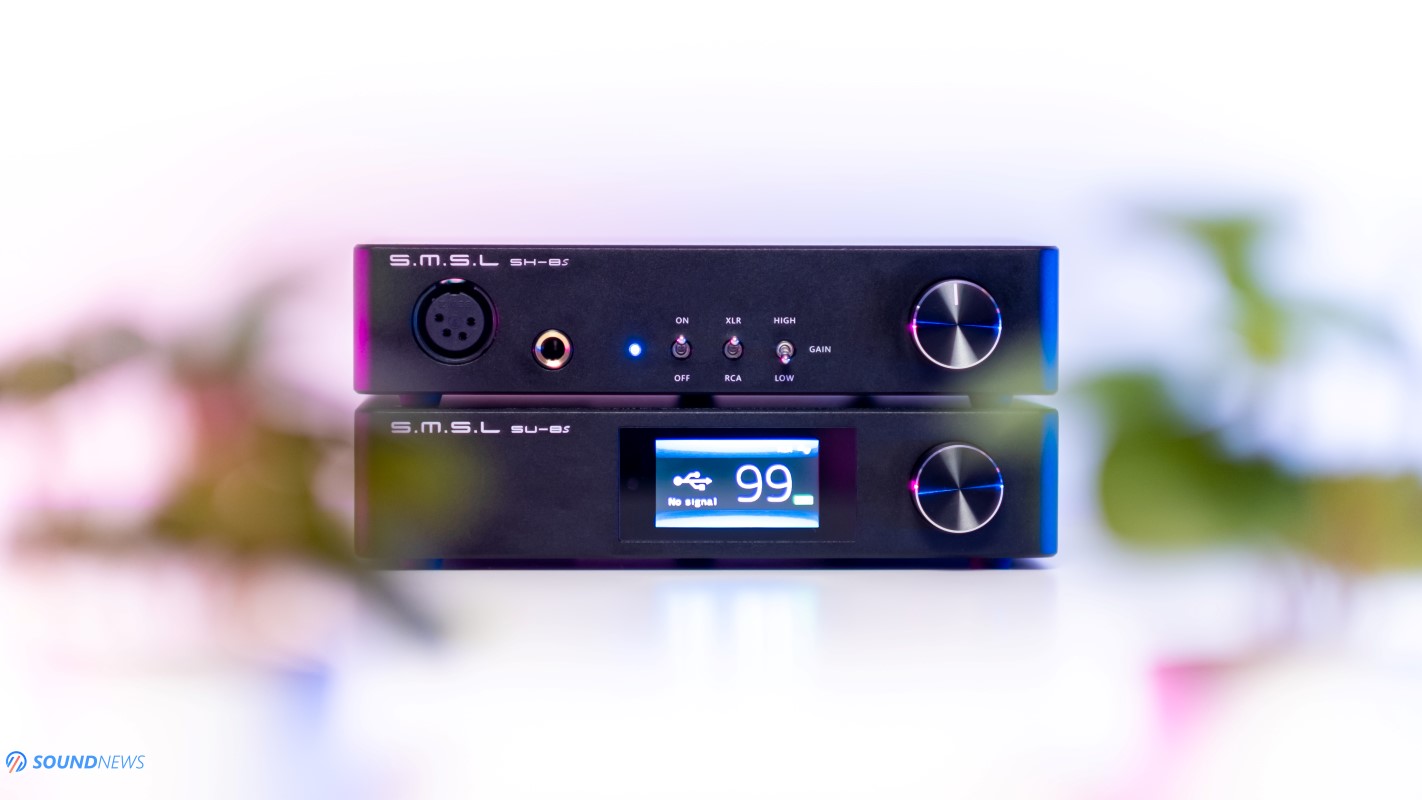
V. Transient Response
SMSL blessed them with short signal paths, even the power supplies are two times smaller to their higher priced SU-9 and SH-9 combo and that translates into two important skills: 1) This combo is unstoppable when it comes to speed and decay of the notes and 2) Sadly, they can’t land a serious punch when higher dynamics are kicking in. This combo revealed its true nature with higher-end headphones and with all of them it was clear to me that SMSL went all-in when it comes to acceleration and speed, but not so much when it comes to muscle mass, as they couldn’t deliver impressing kicks when bass notes came to play.
Decay of the notes was lightning fast, everything happens in split seconds, with sounds going in and out instantaneously. Having a near zero output impedance, the damping factor is not affected at all, even with low-impedance IEMs, so the lightning speed could be felt with every single headphone, be it big or small. At entry level prices, there would be compromises down the road and the biggest one is surely the bass slam. Both units, but especially the amp can’t properly kick my eardrums, there was always something missing from the low-end, even with headphones as Audeze LCD-4. In my humble opinion, transient response is only half good. On the plus side they will never sound slow and mellow and on the other side…don’t expect Thor’s hammer slam and impact, as for something like that, a transistor-based amplifier biased into Class-A would be mandatory.
Many headphones refused to hit the dance-floor, some of them felt shier as I know them to be. Dynamic headphones weren’t lacking as much impact, but planar-magnetics weren’t getting the current they usually need to delivery punchy bass lines.
Personally, I find the amp slightly drier and less impactful to THX-AAA amplifiers and it seems that a longer burn-in didn’t help it in any way. Again, this is normal behavior as we are dealing with entry level devices.
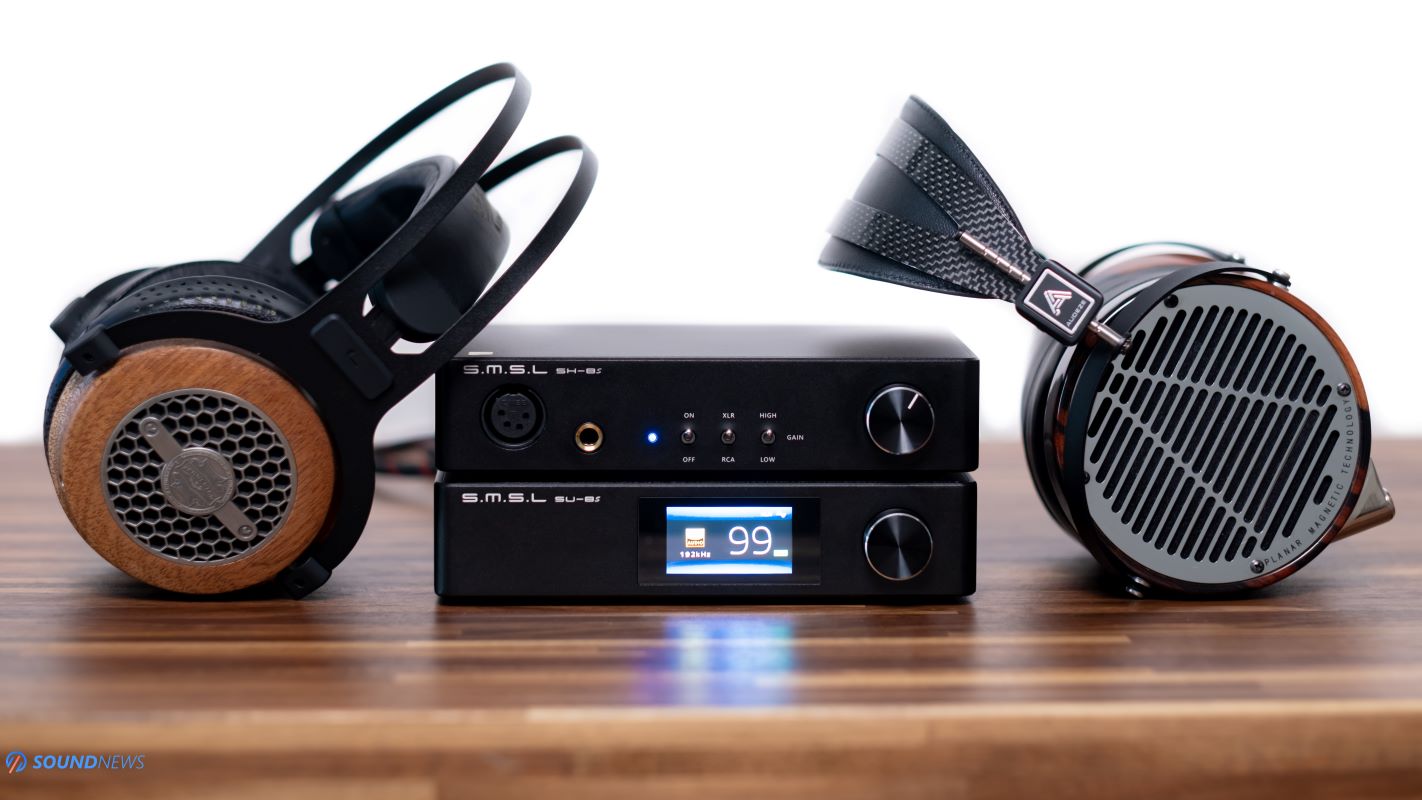
VI. Soundstage & Depth
I liked the sound of the SH-8S amplifier a lot more when it came to detail retrieval and transparency, but things are turning upside down when it comes to stage size and depth. Their SU-8S DAC felt bigger sounding and almost never limiting the stage size when it was connected to a high-end loudspeaker setup, while the amp was making me feel that my music was recorded in smaller and cozier rooms. SMSL nicely balanced this combo, making the DAC sounds big and expansive and the amp clean and undistorted. The final outcome is a medium-sized soundstage and on very rare occasions the sound could go past my shoulder level with open-back headphones.
With all that said, there was still a decent amount of air traveling around and there was a precise pin-point location of the notes even in crowded tracks. My live albums sounded layered and open, pushing all that information outside my body. In this regard, this combo reminds me a lot about all THX triple A and NFCA amplifiers of Topping, that are choosing a very similar sound: impressive when it comes to technicalities, but not so much when it comes to scale and tonality. Their bigger siblings SU-9 and SH-9 performed more or less the same, neither sounding big or small, somewhere in the middle, providing just enough air and an above average stage size on all axes. This combo can’t push huge quantities of air and this is where a true-balanced amplifier with a lower channel crosstalk could portray a bigger picture, widening the distance between the most right and the most left sound. Halving their power supplies and their capacitance was a smart idea, keeping the manufacturing cost as low as possible, delivering good sonics at a lower price point, but that directly impacted their sound staging capabilities in a bad way.
On a positive note, the SU-8S DAC is working in a true balanced configuration giving a very welcome helping hand, carefully placing all the notes in the scenery, creating a sensation of air and three-dimensionality. With the DAC in place, there would still be an above decent stage size, adding just enough air so you could hear all the individual notes flying in their own air bubbles. Muddiness is something that I’ve never experienced with this combo, nor an on-stage presentation.
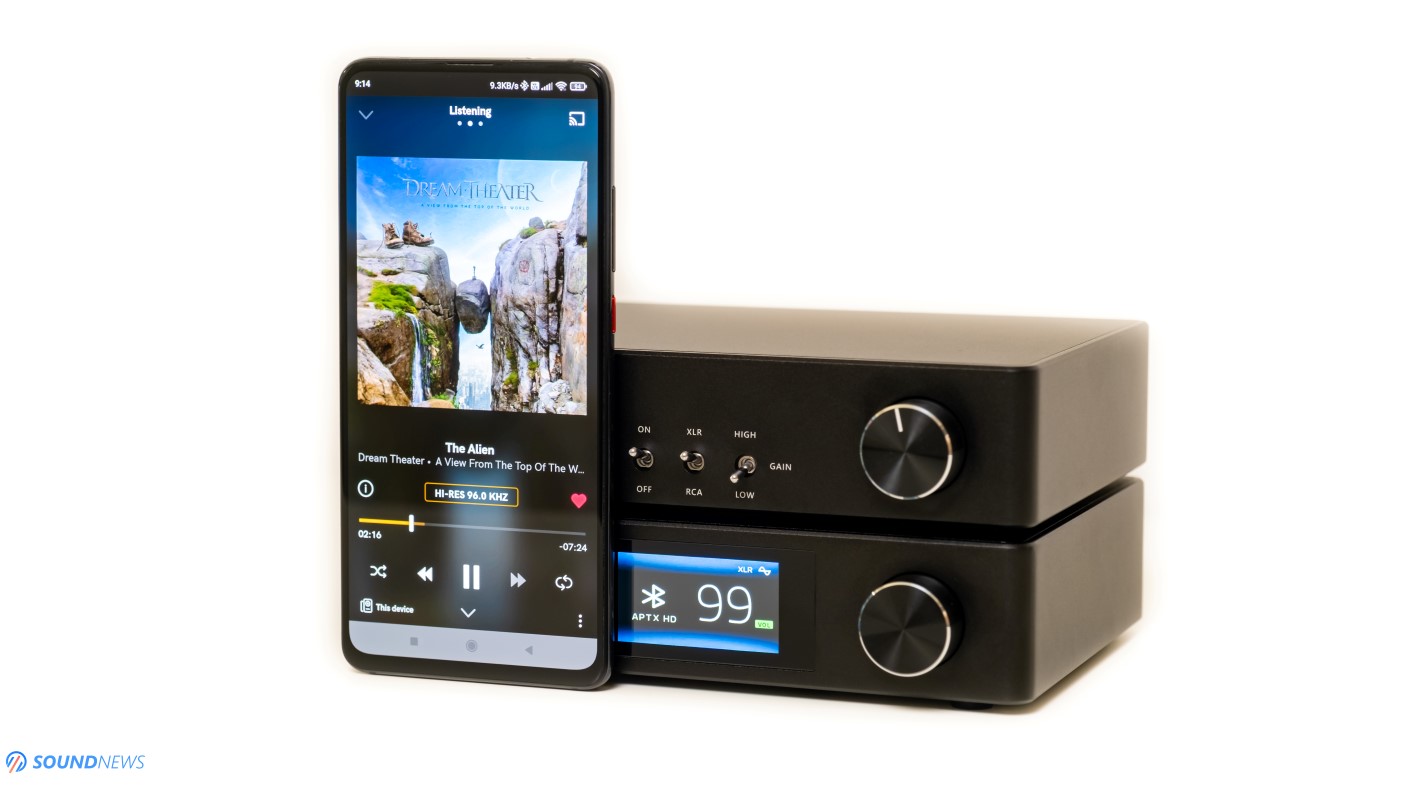
VII. Bluetooth Performance
First of all, there seems to be error on the SU-8S webpage, where LDAC codec is being mentioned. My unit doesn’t support LDAC and I’ve tried two Android smartphones just to be sure. Currently it works via AptX HD which is good enough, but definitely not on par with the LDAC codec, which could be indistinguishable to a wired connection if 16-bit 44.1 kHz lossless files are being played. I’ve tested multiple desktop DACs that offered Bluetooth capabilities and of course those that had a Bluetooth antenna and used BT version 5.0 had the best coverage and luckily, SU-8S seems to use the same winning formula.
You’ll need to enable the BT input on the DAC, search for SMSL BT5.0D with your smart device, connect to it and you’re ready to rock! When it comes to Bluetooth coverage, after putting it in the middle of our HQ, no matter how far I went with my smartphone in a 4-room apartment, I couldn’t lose that BT connection. It was going strong even with 2 concrete walls between us, never skipping a beat! Only when I was at the farthest balcony (some ~15 meters away), my speakers started losing some beats, adding pops and crackles. In an open space, it performed admirable and even past 20 meters, the signal was still going super strong.
Sending music from my smartphone that was playing tunes from streaming services as Qobuz and Tidal worked as a charm and AptX HD codec sounded good enough, losing just a bit of definition, leading edge and detail compared to a wired connection. You can easily use the SU-8S as a Bluetooth receiver in your daily tasks, but you should never consider BT connection as an alternative to a USB connection that would be offering you a higher detail retrieval and a faster presentation.
Bottom line is that SU-8S worked well with two Bluetooth senders and it performed best with those that supports BT 5.0 and AptX-HD codecs.
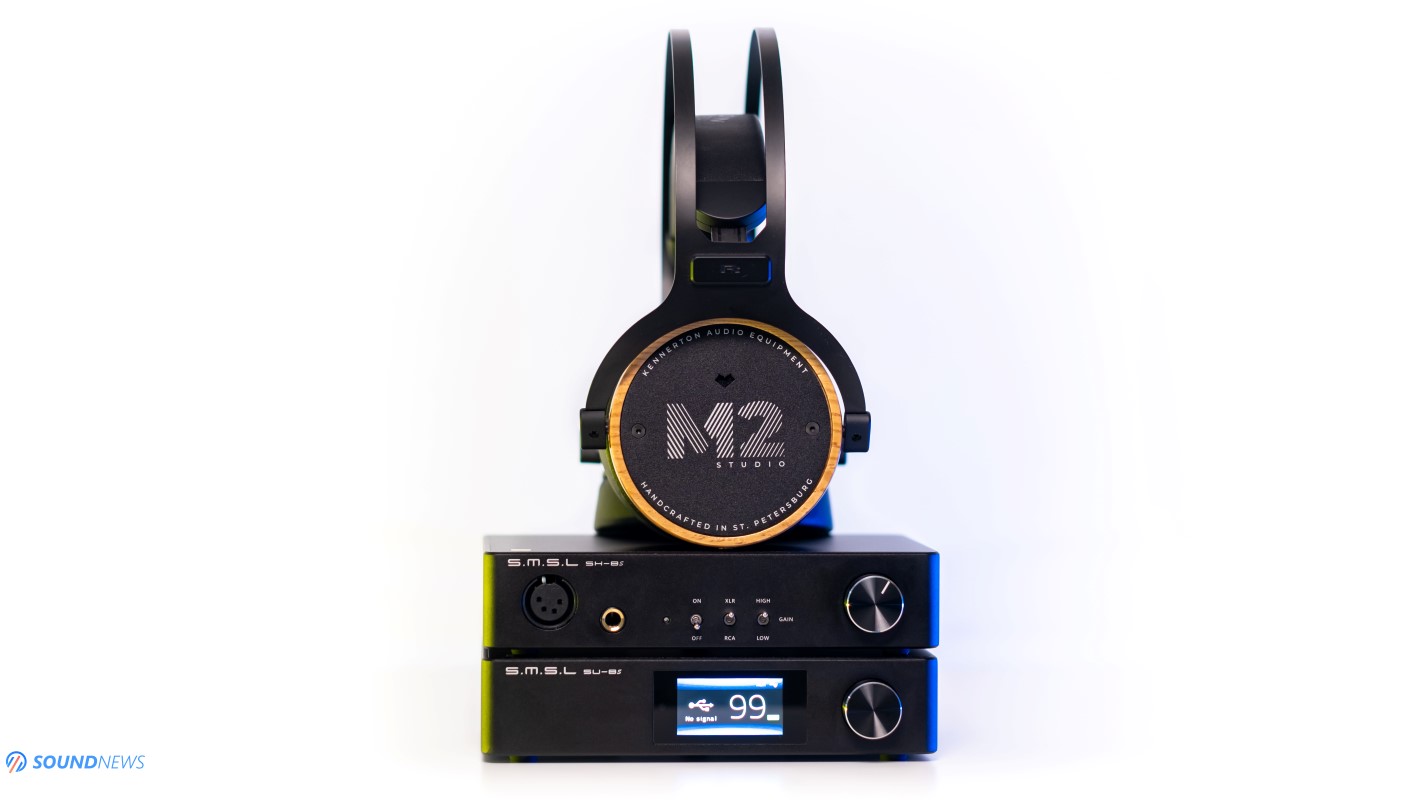
VIII. Frequency Response
When it comes to frequency response, both units are humming the same song, going into the same direction and by that, I mean that the SMSL stack chooses absolute linearity above anything else. The spotlights would never move to a frequency range and everything felt flat and dead neutral.
A. Bass
The DAC is slightly more impressive in the bass region and that somehow counterbalanced the weaker bass slam of the amp unit. Together, this combo offered a high-quality low-end, that had a decent shake and rumble down low. Put some nasty sounding headphones and you can immediately feel the dopamine rising in your blood stream. I particularly enjoyed my time with the Audeze LCD-4 and with the Apos Caspian. Both delivered impressive bass layers, maintaining their cleanness and moving distortion out of the way. If you don’t put your expectancy levels very high and you don’t crave for deep reaching sub-bass notes, then the SMSL combo plays it good to almost great. There were several occasions when I craved for harder bass slams with planar magnetics, but apart from that it delivered clean, undistorted bass lines, never slowing it down or hurting its sub-bass delivery with electronica music. If you can shelve a little bit more, I consider that their upper-class SU-9 and SH-9 combo is slightly better sounding, delivering a heftier bass performance.
B. Midrange
First of all, I’m extremely happy that SMSL used four OPA1612 op-amps in the DAC I/V conversion stage, two more OPA’s as voltage boosters and two OPA564 as current buffers in the amplifiers. If this reads like some gibberish nonsense, OPA op-amps are regarded as leaning towards a warmer midrange, that’s why you could normally spot them in ESS Sabre designs and in some of the latest SMSL and Topping headphone amplifiers. The SMSL combo can’t possibly emulate the sound of a well-designed transistor-based or tube amplifier, but they are definitely adding just a small seed of midrange presence. I find them extremely linear, but never going towards brightness or extreme listening fatigue. If you want a lot of warmth and smoothness then this combo is definitely not for you, but if being linear and true to the source is important to you, then you came to the right party. I didn’t enjoy this stack that much with something like Hifiman HE1000SE and HE400SE, but I really liked it with Audeze LCD-4 and Kennerton Wodan. That linearity can be your best ally with warm sounding headphones and your biggest enemy with brighter sounding cans. Midrange is mostly linear, never trying to impress with a longer vibration of guitars of violins, vocal performance was good, but never outstanding. I longed for higher peaks with female voice and for a serious rumble with male voices, but happened only on several occasions.
C. Treble
Both units are going for an extended treble performance way past top octave. I find their trebles clean, defined and well-textured on anything that hit my eardrums. Rock and metal felt raw and sometimes unpolished, but that is the way they meant to sound. Rarely it felt crude, as some listening fatigue crawled inside. Sometimes there is too much treble energy and sometimes it comes in perfect doses. The newest progressive single by Soen – Thurifer (Qobuz / Tidal) sounded so alive and impactful with the Audeze LCD-4. The bells and snares hitting on the left side had enough kick to start moving my feet to the rhythm of the music. It felt meaty, raw, intoxicating and so addictive, adding just a pinch of darkness in a perfectly executed prog track. There is an exact balance between beaty and brute force and I’ve got a perfect mix of everything in just 6 minutes. With the right track and proper headphones, the SMSL stack would never lack technicalities, naturalness, blending together only the good parts and discarding the rest. All in all, there is an outstanding extension in the treble, providing just enough texture and impact when snare drums and cymbals are coming to play.
Overall, the frequency response felt complete and extended from the lowest pits of sub-bass to the highest mountain peaks of the upper treble. There aren’t anomalies, rises or drops anywhere, but you’ll certainly get a little bit more treble energy.
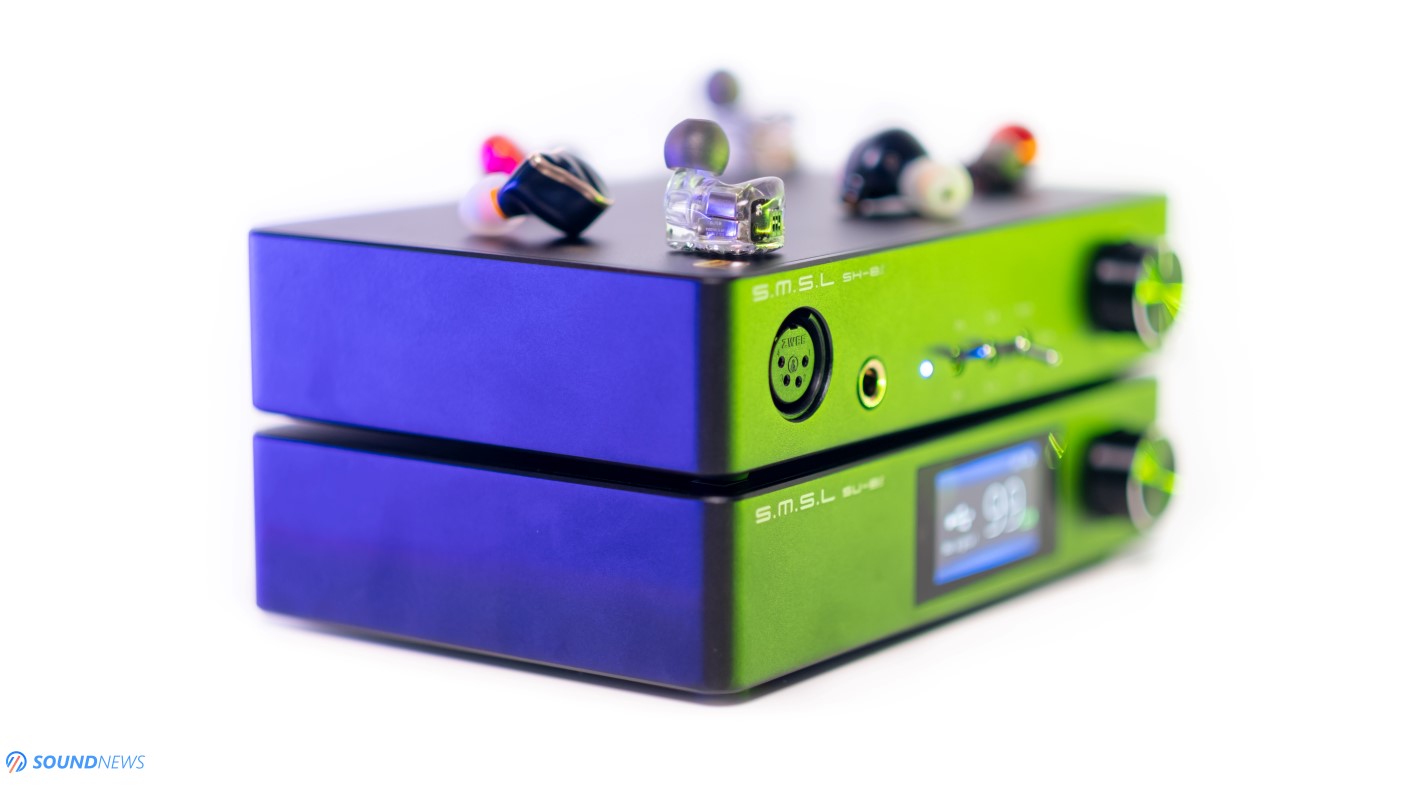
Conclusion
SMSL always had a watchful eye on everything that is happening with personal audio. I find them fierce, always trying to compete, proving that they still got some talent and proper engineering skills. Their Precise Linear Feedback Circuit (PLFC) amplifier modules are pumping gobs of undistorted and clean power with as little as 30W from the wall. Their SH-8S could easily be the last amplifier you’ll ever need, if you don’t intend on driving the hardest loads out there and if you don’t like your music mellow or smooth. Both units are choosing honesty, linearity and transparency above everything else and with all due respect, these are the greatest pillars of audiophilia, as you can’t possibly have an outstanding audio performance, without winning on the technicalities. While, this combo won’t challenge the best transistor-based amplifiers out there, nor the best R-2R units, they will surely deliver a hell of a show versus pricier combos any time of the day. Today’s combo delivered a highly detailed sound, moving the noise floor out of the picture, so you could use your IEMs, over-ears or desktop headphones and have the same results.
If their higher tiered SU-9 and SH-9 are out of your reach, then today’s combo delivers a very similar performance at a more attractive price point, missing just on a few features that may not be that important to you.

Both units deserve our Bronze Award for excellent technicalities at very attractive price points. SMSL SU-8S DAC will set you off $359 and its complementary SH-8S headphone amplifier just $229.
SMSL SU-8S and SH-8S were kindly provided by Apos Audio and you can get can them from their web-store here and here, or you can get them as a combo that nets you a free RCA interconnect from here (Apos offers free shipping in the USA and Canada, free 45-day returns in case you don’t like it, an extra year of warranty and lowest price guarantee).
PROS:
- Lightweight and small, sleek looking too
- Good build quality, really like the standard brick look
- Linear and extended in the frequency response
- A colorless sound tuning, these are going for a dead neutral presentation
- Impressive levels of transparency and inner-detail
- An above decent soundstage, with a much nicer imaging and pin-point location of the notes
- Noiseless with ultra-sensitive IEMs
- Plenty of power on tap even for harder to drive planars
- A feature packed DAC that has absolutely everything (sound filters, an MQA decoder, preamplifier functionality and Bluetooth capabilities)
- An outstanding value
CONS:
- Not the punchiest sounding DAC and amplifier, lacking in the slam department
- Soundstage could be better, especially when it comes to width
- Could sound too serious at times, lacking soul and emotions
ASSOCIATED EQUIPMENT:
- DACs: SMSL SU8S, D1SE, Audiobyte HydraVox & HydraZap, Musician Aquarius, Matrix Audio Element X, Gold Note DS-10 Plus & PSU-10 Evo, Gustard X26 PRO, Topping D90SE
- DAPs: FiiO M11 Plus LTD, M15, Shanling M8, M6 (21), M3X
- Headphone Amps: Flux Lab Acoustics Volot, FA-10, Benchmark HPA4, Singxer SA-1, Burson Soloist 3X, Musician Andromeda, SMSL SP400, Topping A90, Gustard H16 & others
- Preamps: Benchmark HPA4, Topping PRE90
- Power Amps: Benchmark AHB2, KECES S300, SMSL SA400
- Loudspeakers: KEF Reference 3, Natural Sound NS-17
- IEMs: FiiO FA9, FH7, FH5S, FD5, Meze Rai Penta, Rai Solo, LittleDot Cu KIS, Hiby Crystal 6 & others
- Portable headphones: Sennheiser Momentum 2, Meze 99 Classics
- Full-sized headphones: Apos Caspian, Hifiman Susvara, HE1000SE, Arya, HE400SE, Audeze LCD-4, Erzetich Phobos, Erzetich Mania, Kennerton Wodan, Magni, Gjallarhorn, Vali, M12S, Ollo S4X Reference, Sendy AIVA & others
- Interconnects: QED Reference (x2), Topping TCX1 (x2)
- Speaker cables: Kimber PR8, Audioquest Type4
- Power Cables: Isotek EVO3 Premier (x3)
- Balanced Isolation Power Conditioners: PLiXiR Elite BAC1500, Elite BAC400
